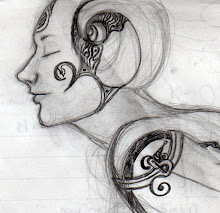Fire, violent and impetuous, is part of our artist hive mind of symbolism. Both destroyer and creator, it's the glue that holds together the mobius strip of life itself. Western culture's example of this is seen best with the phoenix, reborn from it's own ashes. Southeast Asia has its own distinctive motif to represent the concept:
 This curling, almost feather-like design is central to most traditional Buddhist Thai art and used on houses, temples, and decorative work. It can symbolize two things depending on form and context: Kranok - the cleansing flame of Buddhism, or Kanok - humanity's flame of impulsiveness and passion, which can be quelled by Buddhist teachings to reach enlightenment.
This curling, almost feather-like design is central to most traditional Buddhist Thai art and used on houses, temples, and decorative work. It can symbolize two things depending on form and context: Kranok - the cleansing flame of Buddhism, or Kanok - humanity's flame of impulsiveness and passion, which can be quelled by Buddhist teachings to reach enlightenment.Like what happens to many religious motifs, its mythological intent slips further away as it usage becomes more decorative. Here is the same motif, but highly stylized:

This is the top of a small craft box I bought from a tourist shop in Chiang Mai. The motif is simplified to the point of lines and dots, made to sell to silly travelers like me. Furthermore, it was a cheaper, hand-painted alternative to the gold leaf lacquer boxes of nagas and elephants. Whether or not the painter knew the history of the iconography wasn't what he was hired for. He was hired to paint as many as he could as fast as he could.
And yet I love it dearly.
The thin, precise lines of acrylic paint bring me great joy, combined with the S-curves I use so much in my own work. Lovely stops, starts, and flourishes. I'd like to think that the painter could make lovely original work with lines like these. For what it is and its possibilities, it's terribly charming, this art-inspired handicraft.
Am I contributing to the dilution of art into craft? Maybe. But maybe art and academia need to be set alight once in awhile so it can be reborn as well. And then later on, when the position has come full circle, we can have this discussion again from the other side.











